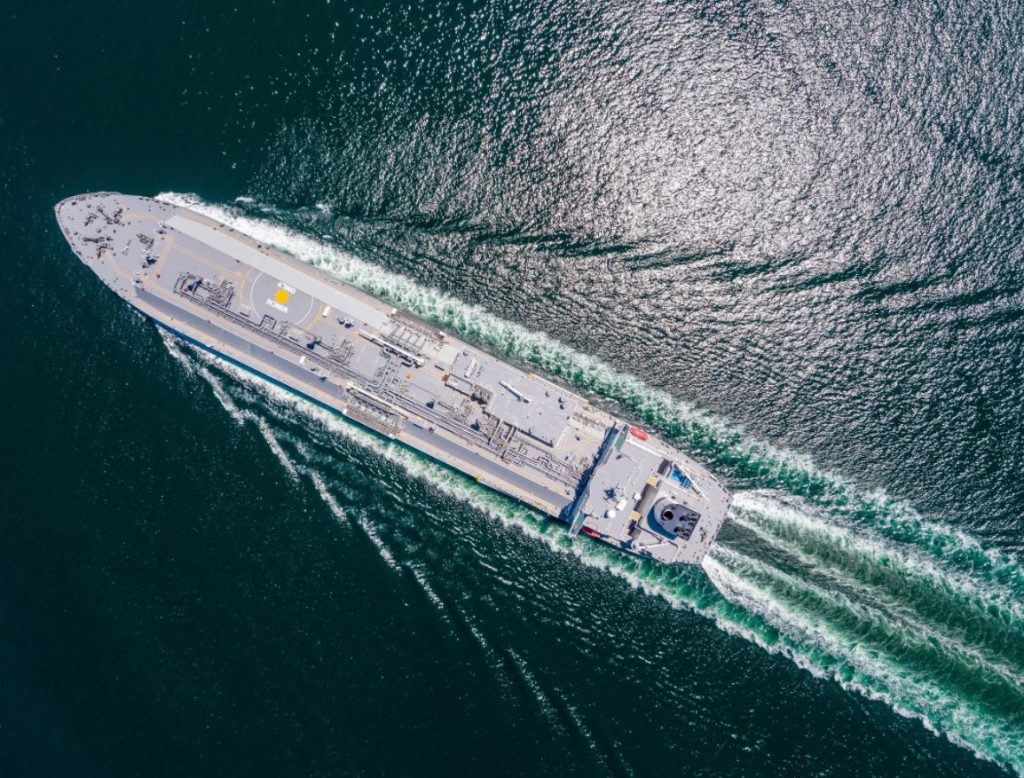In 2020, global LNG imports reached 356.1 million tons, increasing by 0.4 percent compared with the previous year, according to the newest annual report by the international group of LNG importers, GIIGNL.
Despite the challenges imposed by the pandemic, LNG trade has proven resilient increasingly diverse and global, the report said.
Trade continued to grow strongly in the first quarter of 2020 but as demand weakened
in the second and third quarters, supply-side adjustments helped balance the market.
In the fourth quarter a strengthening of demand and unplanned liquefaction outages resulted in a tightening of the market.
US LNG underpins supply growth
In 2020, the United States accounted for most of the new supply volumes (+11 MT) due to the ramp up of projects commissioned in 2019 as well as the commissioning of 5 large-scale liquefaction trains in 2020, the report said.
These include Cameron LNG trains 2 and 3, Corpus Christi LNG train 3, and Freeport LNG trains 2 and 3.
Australia also added 2.4 MT to the new supply and Russia contributed 0.3 MT, the report said.
Unlike previous years, 2020 was characterized by a deceleration of new LNG supply
coming on stream.
Almost all exporting countries experienced decreases in their exports, with the
greatest declines in Trinidad & Tobago and Malaysia with 2.4 MT each, followed by Egypt with 2.1 MT.
Asia drives global demand
Asia continues to be the leading importing region with a 71 percent share of global LNG imports, up from 69 percent in 2019, the report said.
Asian LNG imports grew by 3.4 percent in 2020, reaching 254.4 MT.
Imports rose in all Asian countries except Japan, Pakistan, Indonesia, Malaysia and
Singapore.
Japan experienced the greatest decrease in LNG imports with 2.4 MT, which represented a fall of 3.2 percent.
This happened notably due to lower LNG imports during the second quarter of 2020 following the lockdown measures which were implemented within the country and their downward impact on electricity consumption.
However, LNG imports showed a progressive recovery from June onwards with a
spike in December 2020 due to the exceptionally cold weather.
Despite this, Japan remains the leading LNG importing country in the world with 74.4 MT or a 20.9 percent market share.
South Korea experienced a moderate growth in LNG imports of 0.7 MT, which were up during the first quarter due to temporary closures of coal plants mandated by the government.
China experienced the greatest growth in terms of imported volumes rising to 7.2 MT or 11.7 percent, but still below its 2019 growth of 14 percent.
The main surge of LNG imports took place during the second quarter of
2020, when LNG imports were favored over pipeline imports, as a consequence of lower spot LNG prices, the report said.
Low spot LNG prices in 2020 triggered “outstanding growth” of spot and short-term volumes
2020 was marked by an “outstanding” growth in spot and short-term transactions.
Spot and short-term volumes increased by 23.5 MT, a 19.8 percent increase, reaching 142.5 MT, the report said.
This represented 40% of total trade compared with 34% in 2019.
The decrease of natural gas and LNG demand, which resulted from lower economic activity on a global scale, led to depressed spot LNG prices during most of 2020, incentivizing spot and short-term purchases in many countries, the report said.
The US remained the leading exporter of spot and short-term LNG, accounting for 21.3 percent of total spot and short-term volumes, closely followed by Australia with a 19.9 percent market share, the report said.

